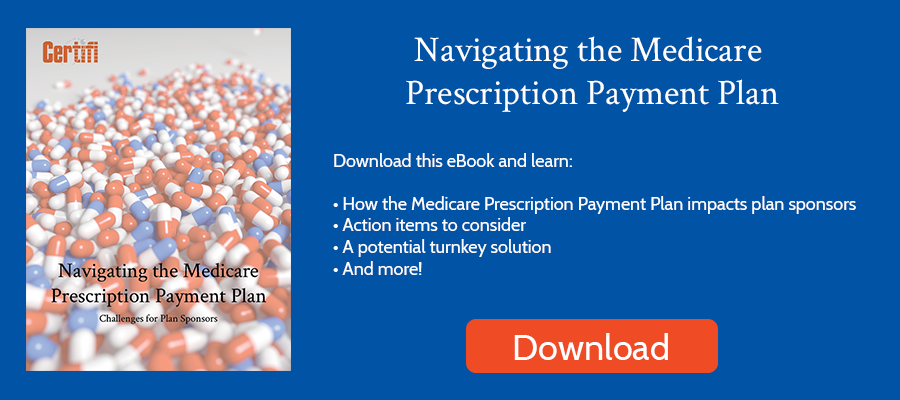According to data analyzed by the Commonwealth Fund, 17% of beneficiaries voluntarily disenrolled from a Medicare Advantage plan in 2021, an increase of 7% from 2017. For health plans, those disenrollments can negatively impact revenue and likely signals Medicare Advantage product issues.
Understanding why Medicare Advantage beneficiaries disenroll can help health plans develop strategies to help keep existing members. Here’s a look at common Medicare Advantage churn reasons and what health plans can do to retain beneficiaries.
Lack of Network Coverage
That same Commonwealth Fund report found that 23% of those who disenrolled did so because the plan lacked network coverage. Likely that means the health plan offered an inadequate provider network or limited access to the member’s preferred doctors or healthcare facilities.
The breadth and depth of a Medicare Advantage health plan’s provider network can impact disenrollment. For many Medicare Advantage plans, that narrow network helps the plan negotiate better provider prices because they can deliver more traffic to those providers. Building a broader network to retain Medicare Advantage members may have unintended consequences – like driving up provider prices or reducing health plan profitability.
How can health plans proceed? Start by assessing your current provider network. Encourage feedback from members regarding their provider experience and ask them to rate your network adequacy. Determine if specific geographic areas suffer from limited networks and seek new partnerships to enhance your network.
Telehealth and virtual care can also help improve underperforming networks. Telehealth can expand access to providers, especially in underserved areas. Don’t forget to educate members on the availability and benefits of telehealth services.
High Costs and Affordability Concerns
According to the Commonwealth Fund, 23% of those who disenrolled from a Medicare Advantage plan did so for financial reasons. That could be due to high premiums, high out-of-pocket expenses, or because enrollees felt another health plan offered more value.
Medicare Advantage plans can enact several strategies. First, educate members about costs to combat financial concerns. Many members are likely unaware of cost-saving opportunities like preferred providers, generic prescriptions, and preventive services. Financial counseling services can also help members under the total costs of Medicare Advantage health plans.
Plan design also plays a role. Consider benefit designs that align with your members’ needs. Surveying members or analyzing internal data might uncover additional benefits that make your plan more attractive, like reduced co-payments for essential services or enhanced coverage for specific chronic conditions. The addition of dental, vision, and hearing services is also popular among Medicare Advantage beneficiaries.
Problems Getting Care
Roughly 18 percent of Medicaid Advantage members reported that problems getting care led to their disenrollment. That includes difficulty getting coverage for specific services, issues with the approval process, or the inability to get desired care.
Health plans should streamline their prior authorization processes to reduce unnecessary delays. Reducing the administrative burden on providers and members can also help limit member churn due to problems receiving care.
Navigating the healthcare system can be difficult for seniors. As a result, many health plans have turned to care coordinators or case managers. These team members can help members gain approvals, schedule appointments and coordinate services for different providers.
Finally, education can also minimize churn. Make sure both members and providers are aware of plan coverage guidelines.
Customer Service Issues
Another 13% of Medicare Advantage churn occurred because of customer service issues. Those issues could range from getting accurate plan information to a poor experience with the member services team.
Churn resulting from customer service failure might be the most concerning disenrollment reason for Medicare Advantage health plans. However, underperforming customer service issues may be easy to tackle.
Consider your communication channels. Many customer service issues start because it’s difficult for members to access member service staff or information. Leverage phone, email, online portals, and mobile applications to offer content when and where members want it.
Invest in training programs that help your team better understand plan benefits, coverage information, and internal processes. Don’t overlook investing in tools that help member service teams better serve members. Soliciting feedback about your team’s knowledge gaps and common member questions can help highlight areas for improvement.
Leverage robust self-service options, like a member portal and a payment portal and ensure the data available is clear, well-organized, and consistently updated.
Finally, leverage health insurance data analytics – like call resolution rates, call categorization, and member and employee surveys – to identify areas for improvement.
Issues with Prescription Drug Benefits
Finally, 9% of enrollees cited problems with prescription drug benefits as their primary reason for disenrollment. Issues may range from a lack of prescription drug coverage to difficulty getting name-brand drugs.
Start by regularly reviewing your prescription formulary to ensure it covers a wide range of generic and brand-name medications. Regular reviews help ensure your prescription drug program continues to meet changing member needs.
As we mentioned in earlier categories, a streamlined prior authorization process and robust member education strategy can help make it easier for members to get their prescriptions and help them better understand their prescription drug options. Including user self-service tools – like an online formulary search – can streamline information delivery.
Finally, ensure you have a broad network of participating pharmacies to improve access for members. Work with those pharmacies to improve the coordination of benefits and prescription fulfillment processes.
The Impact of Medicare Advantage Disenrollment on Health Plans
Medicare Advantage disenrollment can negatively impact health plans in several ways. Not only will they lose premium revenue, but disenrollment could lead to a smaller risk pool and increased risk of adverse selection.
Plus, the potential loss of market share could impact a health plan’s brand reputation, leading to downstream effects like a negative impact on member satisfaction and trust and market share erosion.
By implementing these strategies, Medicare Advantage plans can address financial concerns and support members, ultimately reducing disenrollment rates and ensuring members can access affordable, quality healthcare services.
Certifi’s health insurance premium billing and payment solutions help healthcare payers improve member satisfaction while reducing administrative costs.








